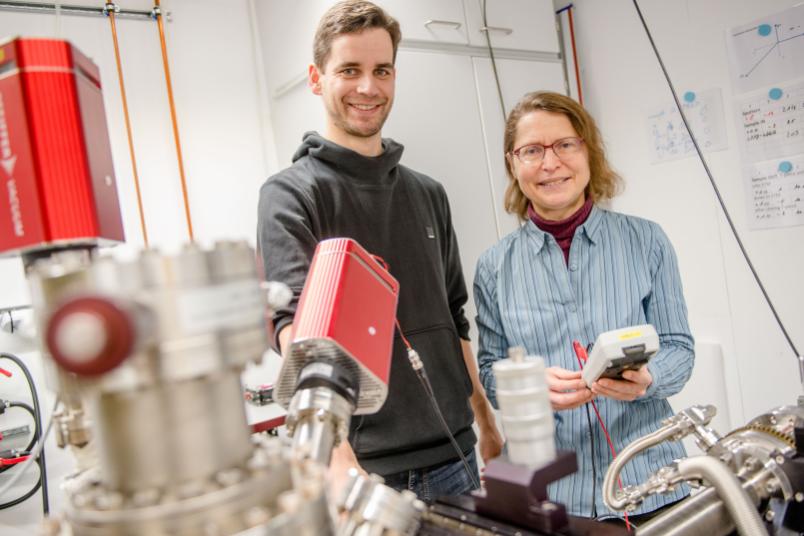
Chemistry Tracking a solvation process step by step
Numerous chemical and industrial processes take place in solution. But the exact interactions between solvent and solute are not yet understood.
Chemists of RUB tracked with unprecedented spatial resolution how individual water molecules attach to an organic molecule. They used low-temperature scanning tunneling microscopy to visualize the processes at a scale smaller than one nanometre. This allowed them to investigate the properties of hydrophilicity and hydrophobicity at the molecular level, i.e. why certain parts of organic molecules attract or repel water.
Where water molecules attach
As an organic molecule, the researchers used a dye with different functional groups that are polar, i.e. slightly negatively or slightly positively charged. Then they added individual water molecules step by step and observed where these attached to the dye molecules.
Initially, this took place preferentially on the polar molecular groups. When the scientists increased the proportion of water, the newly added molecules attached to the water molecules that were already bonded.
Understanding how substances dissolve in water
“The results are an important step on the path to understanding solvation processes, that is, how substances dissolve in water”, explains Karsten Lucht, who researches in the team of Prof Dr Karina Morgenstern at the Bochum Chair of Physical Chemistry I. They cooperated as part of the cluster of excellence Resolv with the RUB Chair of Organic Chemistry II and reported the results in the renowned journal “Angewandte Chemie”.